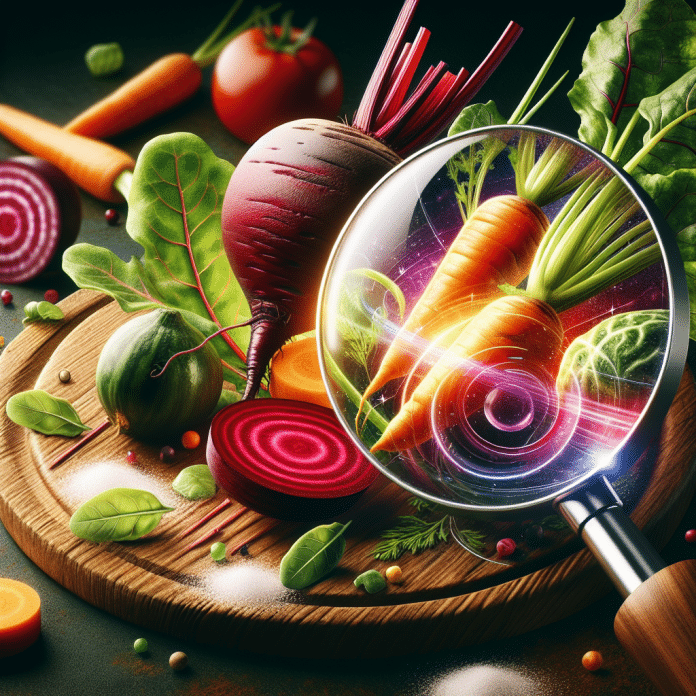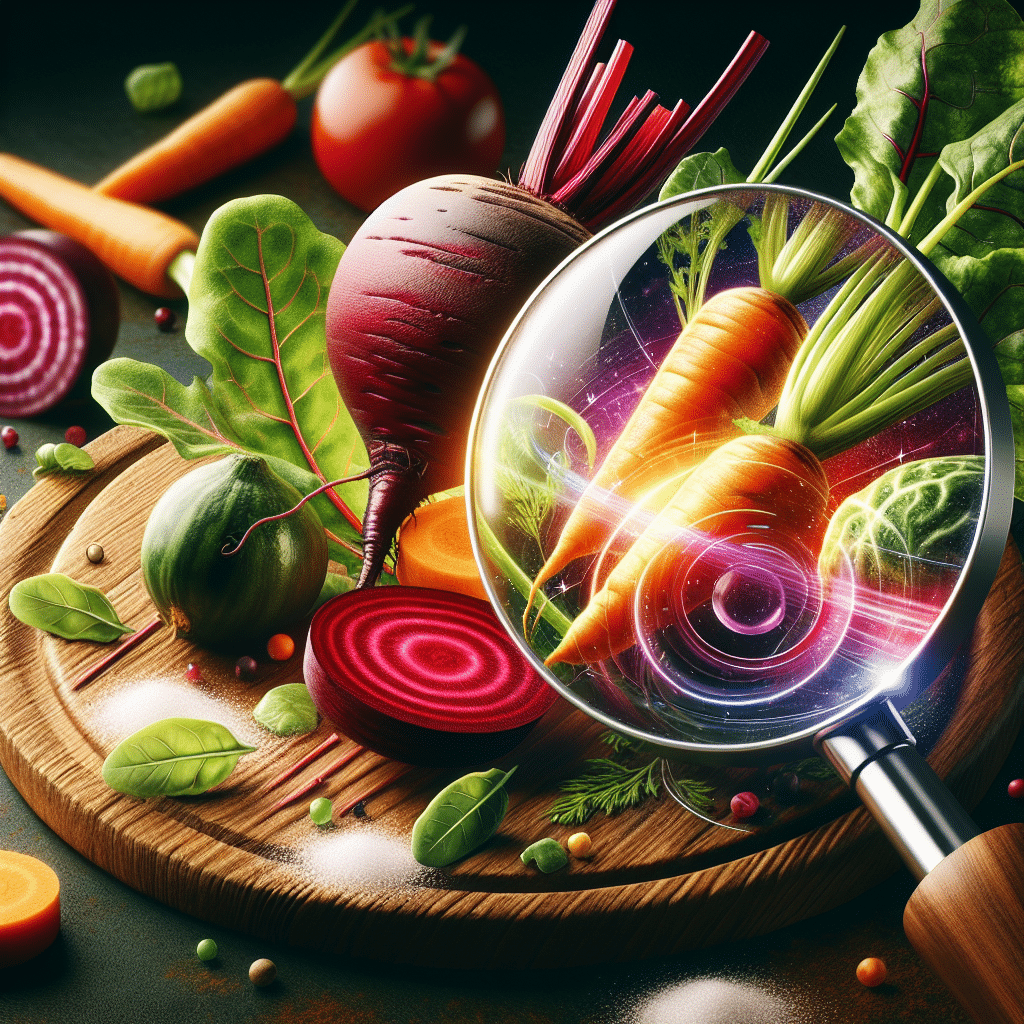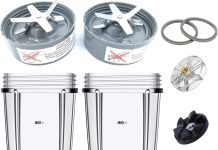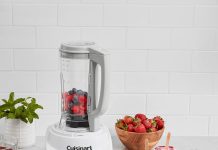Juicing has become a popular way to incorporate more fruits and vegetables into our diets, and with good reason. It’s a convenient and delicious way to obtain essential nutrients. One question that often arises among juicing enthusiasts is whether it’s possible to juice beets and carrots together in a masticating juicer. Well, here’s the good news: you absolutely can! In fact, combining the vibrant colors and nutrients of beets and carrots can create a refreshing and nutrient-packed beverage. Let’s explore the benefits of this power duo and how you can easily achieve the perfect blend in your masticating juicer.
Review contents
Overview of Masticating Juicers
Definition of a Masticating Juicer
A masticating juicer, also known as a slow juicer or cold press juicer, is a type of juicer that uses a slow and gentle squeezing process to extract juice from fruits and vegetables. Unlike centrifugal juicers, which use high-speed spinning blades, masticating juicers work by crushing and then pressing the produce to extract the juice. This method helps to retain more nutrients and enzymes, resulting in healthier and more flavorful juice.
How Masticating Juicers Work
Masticating juicers feature a horizontal or vertical auger that slowly rotates and crushes the produce against a stainless steel mesh screen. As the auger turns, it breaks down the fibers and extracts the juice from the pulp. The juice then passes through the screen while the pulp is pushed out of a separate pulp outlet. This slow and efficient process minimizes heat and oxidation, preserving the nutritional value and taste of the juice.
Advantages of Using Masticating Juicers
Masticating juicers offer several advantages over other types of juicers. Firstly, they produce a higher yield of juice compared to centrifugal juicers. The slow squeezing action of masticating juicers extracts every last drop of juice from the produce, resulting in less waste. Additionally, the slow speed minimizes heat and oxidation, which can degrade the nutrients and enzymes in the juice. This ensures that the juice retains its vibrant color, fresh taste, and maximum nutritional value.
Another advantage of masticating juicers is their versatility. These juicers can handle a wide range of fruits and vegetables, including leafy greens, wheatgrass, and even nuts for making nut milk. They are also great for juicing soft fruits like berries and grapes, as well as harder produce like carrots and beets. The slow and gentle extraction process of masticating juicers ensures that even delicate ingredients are juiced thoroughly without losing their nutritional content.
Types of Juicers
There are two main types of masticating juicers: horizontal and vertical. Horizontal masticating juicers have an auger that runs horizontally and are typically larger in size. They work well with a variety of produce and are especially efficient at juicing leafy greens. Vertical masticating juicers, on the other hand, have an auger that runs vertically and take up less space on the countertop. They are generally easier to clean and assemble, making them a popular choice for those with limited kitchen space. Both types of juicers offer excellent performance and are suitable for juicing beets and carrots.
Juicing Beets and Carrots
Nutritional Benefits of Beets
Beets are a nutrient-rich root vegetable that are packed with vitamins, minerals, and antioxidants. They are an excellent source of folate, manganese, and potassium, which are essential for maintaining a healthy heart and cardiovascular system. Beets are also rich in dietary fiber, which aids digestion and helps regulate blood sugar levels. Additionally, beets contain unique compounds called betalains, which have been shown to have anti-inflammatory and detoxifying properties. Regular consumption of beet juice may support liver function, improve athletic performance, and promote healthy blood pressure.
Nutritional Benefits of Carrots
Carrots are another nutritious vegetable that are often used in juicing recipes. They are rich in beta-carotene, a precursor to vitamin A, which is essential for good vision, a healthy immune system, and vibrant skin. Carrots are also a good source of dietary fiber, which promotes healthy digestion and may help reduce cholesterol levels. Furthermore, carrots contain antioxidants such as vitamin C and lutein, which protect against oxidative stress and support overall health. Incorporating carrot juice into your diet can contribute to a well-rounded nutrient intake and provide numerous health benefits.
Why Juice Beets and Carrots Together?
Combining beets and carrots in a juice not only creates a delicious flavor profile but also enhances the nutritional benefits. Both vegetables are known for their vibrant colors, indicating the presence of powerful antioxidants. By juicing beets and carrots together, you can enjoy a potent blend of antioxidants that promote cellular health, boost immunity, and help fight inflammation. Additionally, the natural sweetness of the carrots complements the earthy taste of the beets, resulting in a refreshing and balanced juice.
Masticating Juicers for Beet and Carrot Juicing
Masticating juicers are highly suitable for juicing beets and carrots due to their efficient extraction process. Their slow and gentle squeezing action ensures that both the beets and carrots are thoroughly juiced, maximizing the yield and preserving the nutrients. The auger of a masticating juicer is designed to break down the fibrous structure of root vegetables like beets and carrots, extracting the juice with minimal effort. This makes masticating juicers an excellent choice for those who want to enjoy the health benefits of beet and carrot juice.
Preparation for Juicing Beets and Carrots
Before juicing beets and carrots, it is important to properly prepare them to ensure the best results. Start by washing the beets and carrots thoroughly to remove any dirt or grit. If using organic produce, a gentle scrubbing with a vegetable brush should be sufficient. For conventional produce, consider peeling the outer skin to reduce exposure to pesticides and residues. Once cleaned, chop the beets and carrots into small pieces that can easily fit through the juicer’s feeding chute. By preparing the ingredients beforehand, you can streamline the juicing process and ensure a smooth extraction of juice.
The Process of Juicing Beets and Carrots in a Masticating Juicer
Assembling the Masticating Juicer
Before juicing, it is essential to assemble the masticating juicer according to the manufacturer’s instructions. This typically involves attaching the juicing components, such as the auger, juice strainer, and pulp outlet, and securing them in place. It is important to ensure that all parts are properly aligned and tightened to prevent any leakage during the juicing process. Taking the time to assemble the juicer correctly will ensure a seamless and hassle-free juicing experience.
Cleaning and Preparing the Beets and Carrots
Once the juicer is assembled, it’s time to clean and prepare the beets and carrots. Rinse the produce again under cold water, removing any remaining dirt or debris. Trim off any leafy tops or roots from the beets and cut them into smaller pieces that will fit through the juicer’s feeding chute. Similarly, chop the carrots into manageable sizes to ensure smooth and efficient juicing. It is essential to handle the produce with clean hands and on a clean surface to maintain hygiene and prevent any contamination.
Feeding the Beets and Carrots into the Juicer
With the juicer assembled and the produce prepared, it’s time to start juicing. Slowly feed the beets and carrots into the juicer’s feeding chute. Apply gentle pressure to ensure a steady flow of produce through the auger. Avoid overloading the juicer to prevent clogging or jamming. As the juicer extracts the juice, it will separate the pulp from the liquid, sending the pulp out through a separate outlet. Continue feeding the produce until all the beets and carrots have been juiced.
Collecting and Storing the Juice
As the vibrant beet and carrot juice flows out of the juicer, collect it in a glass or container. To minimize oxidation and preserve the freshness of the juice, it is best to consume it immediately after juicing. However, if you have leftover juice or prefer to juice in larger quantities, you can store it in an airtight glass container in the refrigerator for up to 48 hours. It is important to note that the longer the juice is stored, the more it may lose some of its nutritional value and vibrant color.
Tips for Juicing Beets and Carrots in a Masticating Juicer
Selecting Fresh and Quality Produce
When juicing beets and carrots, it is crucial to choose fresh and high-quality produce for the best results. Look for beets that are firm, smooth, and free from blemishes or soft spots. The greens should be vibrant and crisp. Similarly, select carrots that are firm, free from any mold or moisture, and have a bright orange color. Choosing fresh and quality produce will ensure that you get the maximum nutritional benefits and a flavorful juice.
Organic vs. Conventional Produce
While both organic and conventional produce can be juiced, there are some considerations to keep in mind. Organic produce is grown without the use of synthetic pesticides, fertilizers, or genetically modified organisms (GMOs), making it a popular choice for those seeking a more natural and eco-friendly option. However, organic produce is typically more expensive. If choosing conventional produce, it is recommended to wash and peel the beets and carrots to reduce potential exposure to pesticides and residues.
Peeling or Not Peeling the Beets and Carrots
Whether to peel the beets and carrots before juicing is a personal preference. Both the skin and flesh of beets and carrots contain valuable nutrients. If using organic produce, it is safe to juice them with the skin intact. However, conventional produce may have pesticide residues on the skin, so peeling is recommended. Keep in mind that peeling the skin may result in some loss of nutrients, so consider balancing this with the potential exposure to pesticides.
Adjusting the Juicer Settings
Most masticating juicers come with adjustable settings to accommodate different types of produce. When juicing beets and carrots, it is important to adjust the juicer settings accordingly. Start with a slow speed setting to allow the juicer to extract the maximum amount of juice. If necessary, you can increase the speed slightly to ensure that the juicer properly processes the fibrous beets and carrots. It may take some trial and error to find the optimal settings for your specific juicer and produce.
Mixing with Other Ingredients
For added flavor and variety, you can experiment with mixing beets and carrots with other ingredients in your juice. Some popular combinations include adding ginger for a spicy kick, apple for a touch of sweetness, citrus fruits for a refreshing twist, or leafy greens for an extra boost of nutrients. Mixing different fruits and vegetables allows you to customize the taste and nutritional profile of your juice to suit your preferences and needs.
Cleaning and Maintenance of the Juicer
Proper cleaning and maintenance of your masticating juicer are essential to ensure its longevity and optimal performance. After juicing, disassemble the juicer and rinse the components under warm water to remove any pulp or residue. Use a soft brush or a cleaning tool provided with the juicer to clean hard-to-reach areas. Allow the parts to air dry completely before reassembling the juicer or storing it. Regularly check and clean the juicer to prevent the buildup of pulp, which can lead to clogging or jamming.
Potential Issues and Solutions
Clogging or Jamming of the Juicer
Masticating juicers may occasionally experience clogging or jamming, especially when juicing fibrous produce like beets and carrots. To prevent this, ensure that you cut the beets and carrots into small pieces and feed them into the juicer gradually. If the juicer does become clogged, switch it off immediately and carefully disassemble the juicer to clear any blockages. Clean the components thoroughly before reassembling and continuing juicing.
Dealing with Pulp
While masticating juicers are designed to extract the maximum amount of juice, they inevitably produce some pulp. If you prefer a pulp-free juice, strain the juice through a fine-mesh sieve or use a separate strainer. Alternatively, you can mix the pulp back into the juice to increase the fiber content and enhance the texture. The leftover pulp can also be used in recipes such as soups, stews, or baked goods, reducing food waste and adding nutritional value.
Adjusting the Juice Consistency
The consistency of your beet and carrot juice can be adjusted to your liking. If you prefer a thinner juice, simply add a splash of water or another liquid, such as coconut water or almond milk, to dilute the juice. On the other hand, if you prefer a thicker and more substantial juice, reduce the amount of liquid added. Experiment with different ratios to find the consistency that suits your taste preferences.
Preventing Oxidation
To prevent oxidation and preserve the freshness of your beet and carrot juice, it is best to consume it immediately after juicing. Oxidation occurs when the juice comes into contact with air, resulting in a loss of nutrients and a change in taste and color. An effective way to minimize oxidation is to fill your glass or container to the brim, reducing the surface area exposed to air. Additionally, storing the juice in an airtight glass container in the refrigerator can help slow down the oxidation process.
Storing the Juice
If you need to store your beet and carrot juice for later consumption, it is recommended to do so in an airtight glass container in the refrigerator. Freshly juiced juice can be stored for up to 48 hours, although it is best to consume it as soon as possible to maximize the nutritional benefits. Over time, the juice may separate, with the pulp settling at the bottom. Simply give the juice a gentle shake or stir before drinking to redistribute the pulp and maintain a consistent flavor.
Discoloration of the Juice
Beet and carrot juice may undergo some discoloration when exposed to air. This is a natural process caused by oxidation and is not indicative of spoilage. To minimize discoloration, consume the juice as soon as possible after juicing, or store it in the refrigerator in an airtight glass container. If you prefer a vibrant-looking juice, you can add a squeeze of lemon juice, which can help preserve the color and freshness.
Health Considerations and Allergies
While beets and carrots offer numerous health benefits, it is important to be mindful of individual health considerations and allergies. Some individuals may experience transient side effects like a pinkish or reddish discoloration of urine or stools after consuming beet juice. This is a harmless condition known as beeturia and is caused by the rich pigments present in beets. If you have any specific health concerns or allergies, it is advisable to consult a healthcare professional or allergist before incorporating beet and carrot juice into your diet.
Delicious Beet and Carrot Juice Recipes
Classic Beet and Carrot Juice
Ingredients:
- 2 medium beets
- 4 medium carrots
Instructions:
- Wash the beets and carrots thoroughly.
- Cut off the leafy tops and root ends.
- Chop the beets and carrots into smaller pieces.
- Feed the beets and carrots into the masticating juicer.
- Collect the juice in a glass or container.
- Stir the juice to combine the flavors.
- Enjoy immediately or refrigerate for later consumption.
Beet, Carrot, and Ginger Juice
Ingredients:
- 2 medium beets
- 4 medium carrots
- 1-inch piece of fresh ginger
Instructions:
- Wash the beets, carrots, and ginger thoroughly.
- Cut off the leafy tops and root ends.
- Chop the beets, carrots, and ginger into smaller pieces.
- Feed the beets, carrots, and ginger into the masticating juicer.
- Collect the juice in a glass or container.
- Stir the juice to combine the flavors.
- Enjoy immediately or refrigerate for later consumption.
Beet, Carrot, and Apple Juice
Ingredients:
- 2 medium beets
- 4 medium carrots
- 1 medium apple
Instructions:
- Wash the beets, carrots, and apple thoroughly.
- Cut off the leafy tops and root ends of the beets and carrots.
- Core and chop the apple.
- Chop the beets, carrots, and apple into smaller pieces.
- Feed the beets, carrots, and apple into the masticating juicer.
- Collect the juice in a glass or container.
- Stir the juice to combine the flavors.
- Enjoy immediately or refrigerate for later consumption.
Beet, Carrot, and Citrus Juice
Ingredients:
- 2 medium beets
- 4 medium carrots
- Juice of 1 orange
- Juice of 1 lemon
Instructions:
- Wash the beets, carrots, orange, and lemon thoroughly.
- Cut off the leafy tops and root ends of the beets and carrots.
- Squeeze the orange and lemon to extract the juice.
- Chop the beets and carrots into smaller pieces.
- Feed the beets and carrots into the masticating juicer.
- Collect the juice in a glass or container.
- Stir in the freshly squeezed orange and lemon juice.
- Enjoy immediately or refrigerate for later consumption.
Beet, Carrot, and Leafy Green Juice
Ingredients:
- 2 medium beets
- 4 medium carrots
- Handful of spinach or kale
Instructions:
- Wash the beets, carrots, and leafy greens thoroughly.
- Cut off the leafy tops and root ends of the beets and carrots.
- Chop the beets, carrots, and leafy greens into smaller pieces.
- Feed the beets, carrots, and leafy greens into the masticating juicer.
- Collect the juice in a glass or container.
- Stir the juice to combine the flavors.
- Enjoy immediately or refrigerate for later consumption.
Conclusion
Juicing beets and carrots together in a masticating juicer is not only possible but also an excellent way to incorporate these nutritious vegetables into your diet. Masticating juicers offer numerous advantages, including high juice yield, minimal heat and oxidation, and versatility in handling different types of produce. By combining beets and carrots, you can enjoy a flavorful and nutrient-rich juice that promotes overall health and well-being.
Remember to select fresh and quality produce, consider the choice between organic and conventional, and adjust the juicer settings to ensure optimal results. Experiment with different combinations and ingredients to create delicious variations of beet and carrot juice. With proper cleaning and maintenance, your masticating juicer will continue to provide you with vibrant and nutritious juice for years to come.
So, go ahead and juice beets and carrots together in your masticating juicer, and explore the endless possibilities of healthy and delicious juicing combinations. Cheers to your health and happy juicing!
































